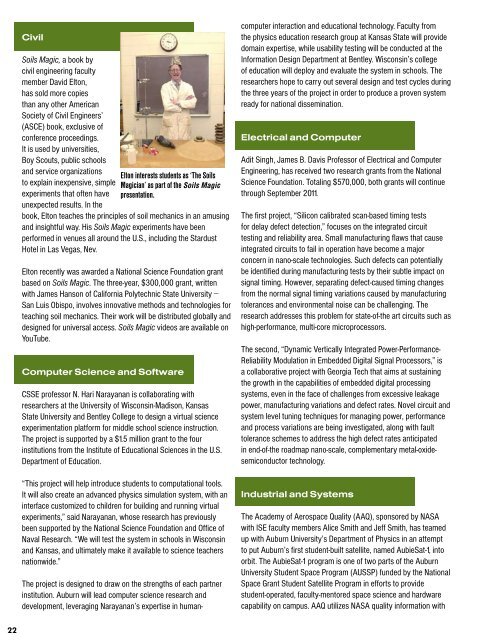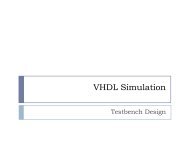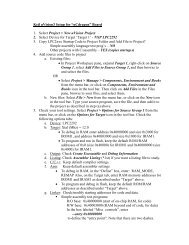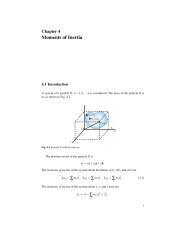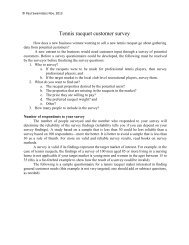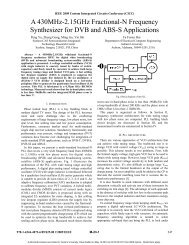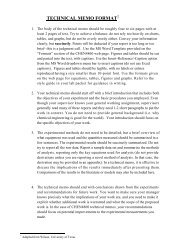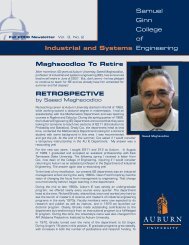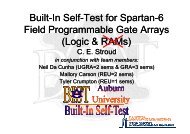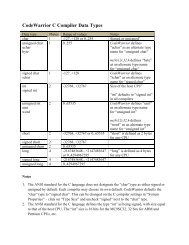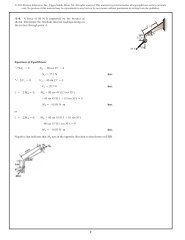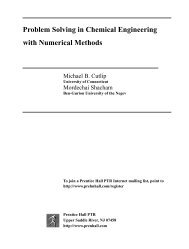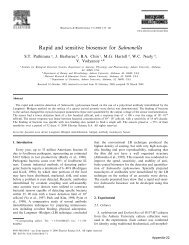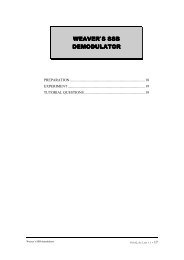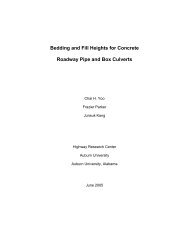Auburn Engineering alumni magazine fall/winter 09 - Samuel Ginn ...
Auburn Engineering alumni magazine fall/winter 09 - Samuel Ginn ...
Auburn Engineering alumni magazine fall/winter 09 - Samuel Ginn ...
Create successful ePaper yourself
Turn your PDF publications into a flip-book with our unique Google optimized e-Paper software.
22<br />
Civil<br />
Soils Magic, a book by<br />
civil engineering faculty<br />
member David Elton,<br />
has sold more copies<br />
than any other American<br />
Society of Civil Engineers’<br />
(ASCE) book, exclusive of<br />
conference proceedings.<br />
It is used by universities,<br />
Boy Scouts, public schools<br />
and service organizations<br />
to explain inexpensive, simple<br />
experiments that often have<br />
unexpected results. In the<br />
Elton interests students as ‘The Soils<br />
Magician’ as part of the Soils Magic<br />
presentation.<br />
book, Elton teaches the principles of soil mechanics in an amusing<br />
and insightful way. His Soils Magic experiments have been<br />
performed in venues all around the U.S., including the Stardust<br />
Hotel in Las Vegas, Nev.<br />
Elton recently was awarded a National Science Foundation grant<br />
based on Soils Magic. The three-year, $300,000 grant, written<br />
with James Hanson of California Polytechnic State University –<br />
San Luis Obispo, involves innovative methods and technologies for<br />
teaching soil mechanics. Their work will be distributed globally and<br />
designed for universal access. Soils Magic videos are available on<br />
YouTube.<br />
Computer Science and Software<br />
CSSE professor N. Hari Narayanan is collaborating with<br />
researchers at the University of Wisconsin-Madison, Kansas<br />
State University and Bentley College to design a virtual science<br />
experimentation platform for middle school science instruction.<br />
The project is supported by a $1.5 million grant to the four<br />
institutions from the Institute of Educational Sciences in the U.S.<br />
Department of Education.<br />
“This project will help introduce students to computational tools.<br />
It will also create an advanced physics simulation system, with an<br />
interface customized to children for building and running virtual<br />
experiments,” said Narayanan, whose research has previously<br />
been supported by the National Science Foundation and Office of<br />
Naval Research. “We will test the system in schools in Wisconsin<br />
and Kansas, and ultimately make it available to science teachers<br />
nationwide.”<br />
The project is designed to draw on the strengths of each partner<br />
institution. <strong>Auburn</strong> will lead computer science research and<br />
development, leveraging Narayanan’s expertise in human-<br />
computer interaction and educational technology. Faculty from<br />
the physics education research group at Kansas State will provide<br />
domain expertise, while usability testing will be conducted at the<br />
Information Design Department at Bentley. Wisconsin’s college<br />
of education will deploy and evaluate the system in schools. The<br />
researchers hope to carry out several design and test cycles during<br />
the three years of the project in order to produce a proven system<br />
ready for national dissemination.<br />
Electrical and Computer<br />
Adit Singh, James B. Davis Professor of Electrical and Computer<br />
<strong>Engineering</strong>, has received two research grants from the National<br />
Science Foundation. Totaling $570,000, both grants will continue<br />
through September 2011.<br />
The first project, “Silicon calibrated scan-based timing tests<br />
for delay defect detection,” focuses on the integrated circuit<br />
testing and reliability area. Small manufacturing flaws that cause<br />
integrated circuits to fail in operation have become a major<br />
concern in nano-scale technologies. Such defects can potentially<br />
be identified during manufacturing tests by their subtle impact on<br />
signal timing. However, separating defect-caused timing changes<br />
from the normal signal timing variations caused by manufacturing<br />
tolerances and environmental noise can be challenging. The<br />
research addresses this problem for state-of-the art circuits such as<br />
high-performance, multi-core microprocessors.<br />
The second, “Dynamic Vertically Integrated Power-Performance-<br />
Reliability Modulation in Embedded Digital Signal Processors,” is<br />
a collaborative project with Georgia Tech that aims at sustaining<br />
the growth in the capabilities of embedded digital processing<br />
systems, even in the face of challenges from excessive leakage<br />
power, manufacturing variations and defect rates. Novel circuit and<br />
system level tuning techniques for managing power, performance<br />
and process variations are being investigated, along with fault<br />
tolerance schemes to address the high defect rates anticipated<br />
in end-of-the roadmap nano-scale, complementary metal-oxidesemiconductor<br />
technology.<br />
Industrial and Systems<br />
The Academy of Aerospace Quality (AAQ), sponsored by NASA<br />
with ISE faculty members Alice Smith and Jeff Smith, has teamed<br />
up with <strong>Auburn</strong> University’s Department of Physics in an attempt<br />
to put <strong>Auburn</strong>’s first student-built satellite, named AubieSat-1, into<br />
orbit. The AubieSat-1 program is one of two parts of the <strong>Auburn</strong><br />
University Student Space Program (AUSSP) funded by the National<br />
Space Grant Student Satellite Program in efforts to provide<br />
student-operated, faculty-mentored space science and hardware<br />
capability on campus. AAQ utilizes NASA quality information with


